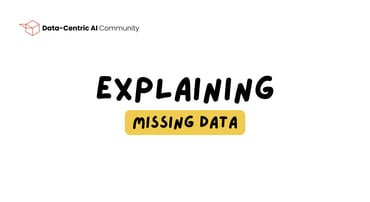The advent of Large Language Models (LLMs) is undeniably leaving its mark across several fields and industries. In the realm of Data Science, they can also prove extremely transformative in the way technical teams manage and analyze their data. In this article, we’ll focus on the impact of LLMs in Data Science Projects and how they can assist in important tasks that data scientists conduct every day.
What are LLMs?
Large Language Models (LLMs) are a class of artificial intelligence models designed to understand and generate human language. Using deep learning techniques, they are trained on large amounts of data from books, articles, websites, or any other text-based sources, and produce quite accurate responses when prompted correctly. This gives them the ability to perform a large amount of language-related tasks, including text completion, translation, summarization, and question-answering to name a few.
Due to their versatility, they are frequently used in several domains such as marketing (content generation), customer support (chatbots and virtual assistants), and even for education purposes (almost like having a personal tutor sometimes!). And naturally, in Data Science!
Applications of LLMs in Data Science
With the ability to process and interpret unstructured text data, LLMs are taking the data science field by storm, revolutionizing the way data analysts and scientists interact with textual information for insights and decision-making. Here are some key applications of LLMs in data science:
- Sentiment Analysis: LLMs can process and analyze large volumes of text data, extracting insights, patterns, and trends. This is useful for sentiment analysis, namely when analyzing customer opinions from social media, reviews, or surveys. LLMs can decode linguistic nuances and pick up on subjective information and categorize them into emotional states.
- Summarization of Insights: LLMs can condense lengthy documents into succinct yet comprehensive summaries, empowering data scientists to swiftly assimilate only the essential details rather than drowning in an ocean of information.
- Generating Reports and Dashboards: Based on adequate prompts, LLMs can generate comprehensive analyses, visualizations, and actionable insights in a language that resonates with data science teams and stakeholders alike.
Limitations of LMMs for Data Science
Although LLMs have a tremendous impact in boosting data science projects, we must not forget that data quality is key. As LLMs are trained on data coming from real sources, we need to stay sharp not to let bias and unfair behavior creep into our models and applications. Here are some risks of blindly adopting LLMs in data science projects:
- Bias and Unfairness: LLMs can easily absorb and regurgitate bias inherent to the sources they consume, perpetuating discriminatory outcomes. To mitigate this issue, adequate strategies are required to guarantee fairness-aware generation content.
- Lack of Interpretability and Transparency: To produce accurate results, these models are often overparameterized and it can be difficult to understand and explain the results they return. This raises some concerns about trust and accountability, which can be problematic across several application domains.
Besides social impact, these risks also have severe consequences for businesses, causing them to lose revenue and some important opportunities. Fortunately, there are a few ways in which we can strive to ensure data quality.
High-Quality Data for your Data Models
“Big Data is not Quality Data”. Although we often assume that having more data to train on will make our models more robust and accurate, the truth is that having representative and high-quality datasets is what is most impactful for the learning process of Artificial Intelligence models:
- Start with a robust Data Profiling: Deeply understanding your data is the first step to develop a successful data pipeline. Check your data for inconsistencies, missing values, outliers, or imbalanced data.
- Improve your models with smart Synthetic Data: Either for bias mitigation, data imputation, or data augmentation, synthetic data can significantly improve the quality of your training sets by mitigating complex issues while keeping real data value.
- Iterate, Iterate, Iterate: Systematically assessing and improving your data will allow your models to become more flexible and reliable. This is the general principle of Data-Centric AI, which focuses on the data, rather than the models.
YData is at the forefront of reshaping how both organizations and professionals approach data, focusing on achieving high-quality data before investing substantial time and effort in models that might guarantee a return of investment.
We continuously contribute to the data science community with the best data-centric AI open-source software out there, from ydata-profiling for data profiling and understanding to ydata-synthetic for a gentle introduction to synthetic data generation.
For more complex and diverse use cases, we’ve put all our expertise into building YData Fabric, which comprises tailored solutions to the unique needs and constraints of organizations, boosting collaboration, communication, and productivity among data science teams.
Conclusion
LLMs extend data science to natural language data, enabling data scientists to be more agile in some of the tasks they perform on a daily basis. From sentiment decoding, summarization, and dynamic reporting, LLMs enrich the data science toolkit with unparalleled precedents.
However, guaranteeing high-quality data is key to preventing these models from going rogue and return biased and discriminatory outputs. The solution to overcome these models is focusing on the quality of the training data — just ask a LLM and it will tell you so itself!
Start creating better data for your models with YData Fabric and take full advantage of LLMs in a high-effective, responsible, and trustworthy way. Check our introductory video and sign up for the community version to get the full experience.
Cover Photo by Google DeepMind on Unsplash



